11 Incredible Pictures Of The Badass F6F Hellcats
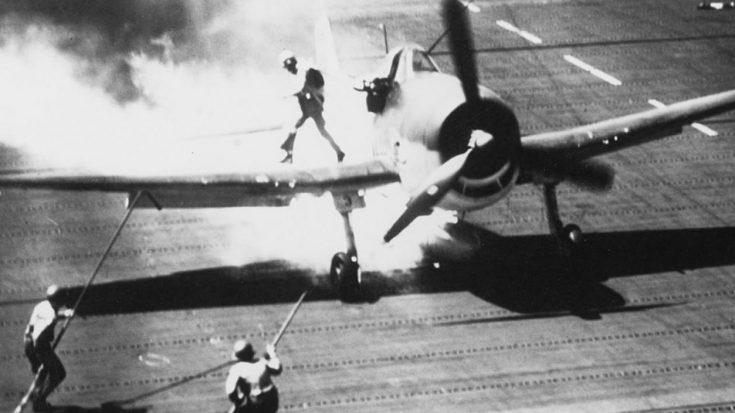
U.S. Navy Naval History and Heritage Command /Public Domain
The Grumman F6F Hellcat can be considered one of the most classic American naval aircraft of World War II. Replacing the F4F Wildcat, over 12,000 of them were used in the Pacific Theater and to great effect. The overall consensus is that its pilots’ earned a 19:1 kill-to-loss ratio, constituting 56% of all Navy and Marine aerial victories.
Because they were so widely used, there are plenty of historical photos of them that are free to the public. After combing through many of them, we’ve picked out the best ones which truly show how great they were.
11.
A U.S. Navy Grumman F6F-3 Hellcat fighter of fighting squadron VF-15 being catapulted from the aircraft carrier USS Hornet (CV-12) via the hangar catapult, 25 February 1944.

10.
The U.S. Navy Grumman F6F-3 Hellcat from Fighting Squadron 9 (VF-9) flies over the beached Japanese destroyer Tachikaze, during Task Force 58’s strikes on the Japanese naval base at Truk, Caroline Islands, 16-17 February 1944. VF-9 was assigned to Carrier Air Group 9 (CVG-9) aboard the aircraft carrier USS Essex (CV-9). On 4 February 1944, Tachikaze ran aground at Kuop Atoll in Truk Lagoon while returning from Rabaul, and remained stranded there despite efforts to free her. During the Allied “Operation Hailstone” 17–18 February, Tachikaze suffered heavy strafing followed by a torpedo hit in the engine room, which sank the ship by the stern.
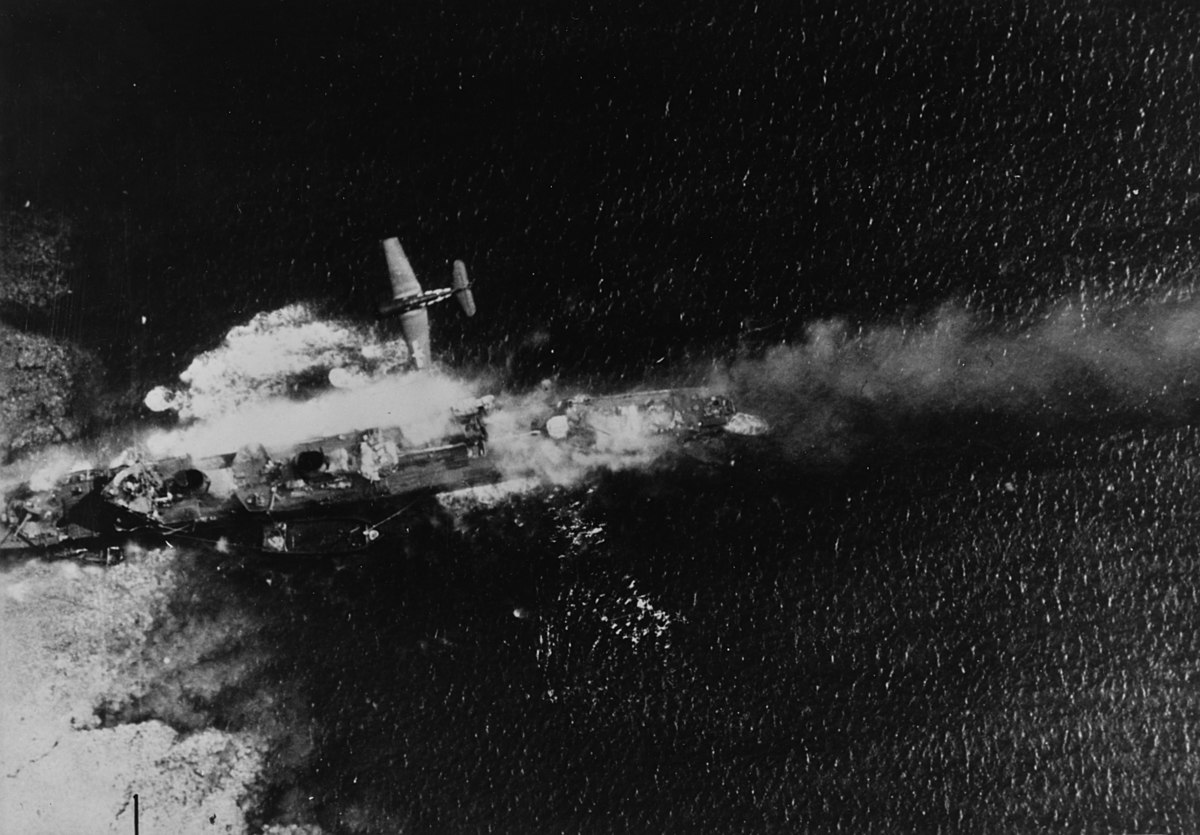
9.
A U.S. Navy Grumman F6F-3 Hellcat fighter makes condensation rings as it awaits the take-off flag aboard USS Yorktown (CV-10), 20 November 1943. The plane is from Fighting Squadron Five (VF-5). Yorktown was then hitting targets in the Marshall Islands to cover the landings in the Gilberts.
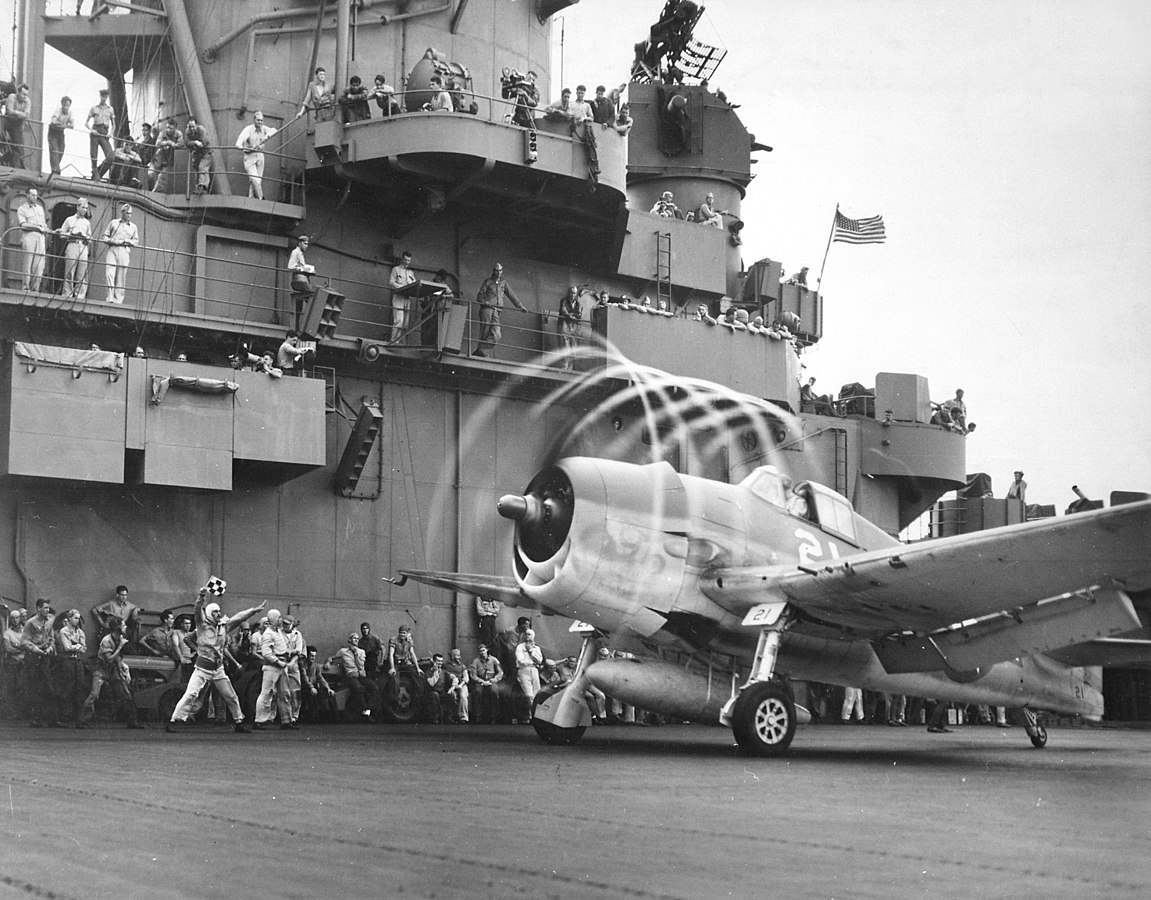
8.
An unhurt pilot of the Royal Netherlands Navy climbs out of his crashed Grumman Hellcat, its nose resting on the flight deck, after making a crash landing on board HMS TRUMPETER. A crowd is gathering around the front of the aircraft.
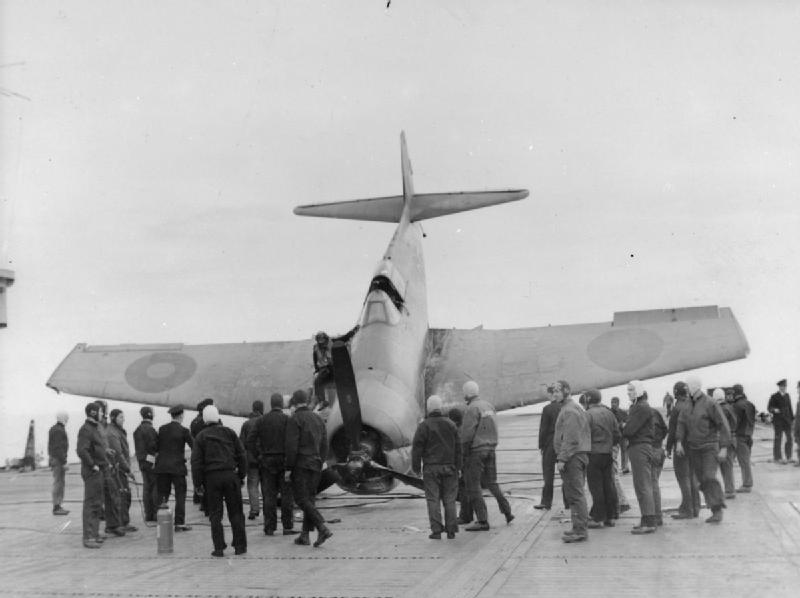
7.
View of the flight deck of the U.S. Navy aircraft carrier USS Essex (CV-9), looking aft from the carrier’s island during her shakedown cruise, 20 March 1943. Planes parked on deck are Grumman F6F-3 Hellcat fighters (in foreground, with wings folded) and Douglas SBD-4 Dauntless scout bombers from Carrier Air Group 5 (CVG-5).
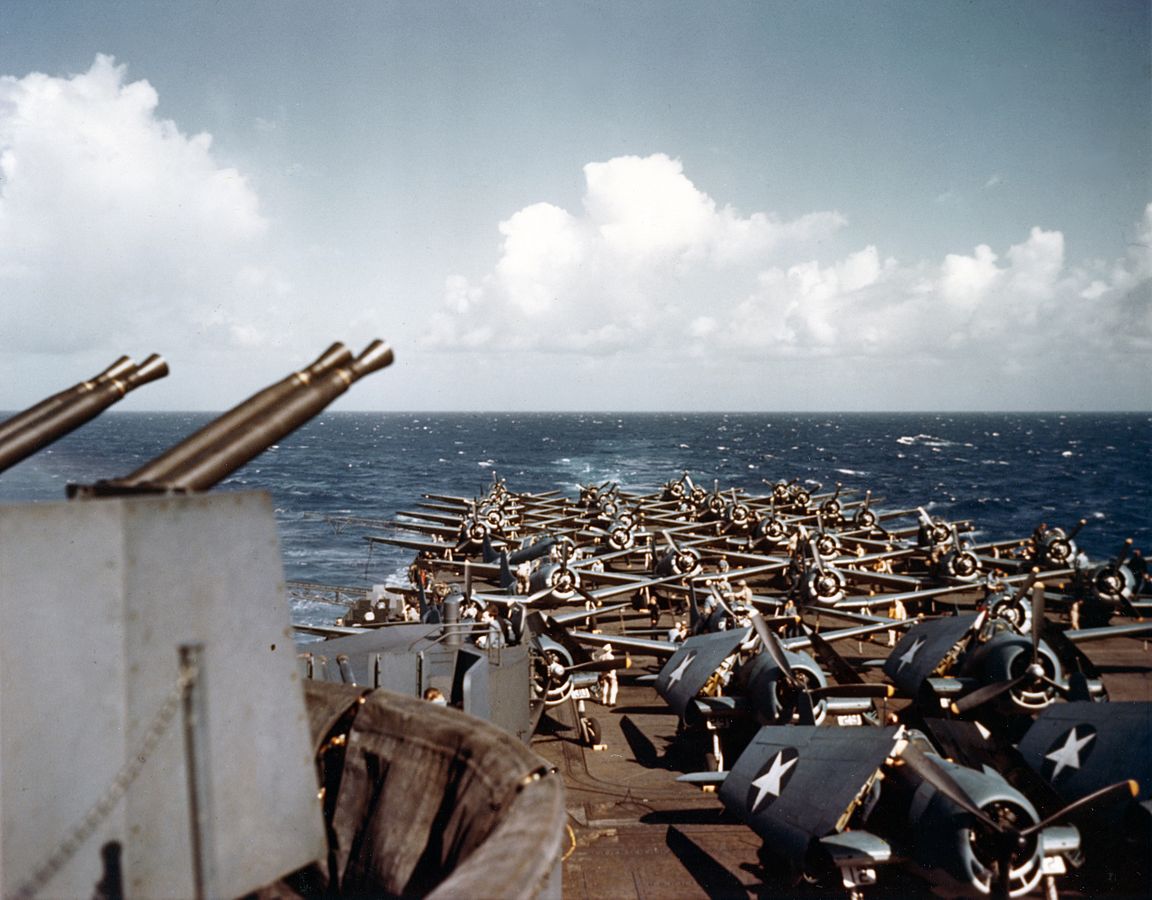
6.
A U.S. Navy Grumman F6F-3 Hellcat of fighting squadron VF-1 launches from the hangar deck catapult on board the aircraft carrier USS Yorktown (CV-10) during her shakedown cruise in the waters off Trinidad, 3 June 1943.

5.
The Royal Navy during the Second World War One of HMS EMPEROR’s bomb party writing the message “An installment from London” on the bomb mount on a Grumman Hellcat of 800 Squadron, whilst the ship is off the coast of southern France just before the invasion began.
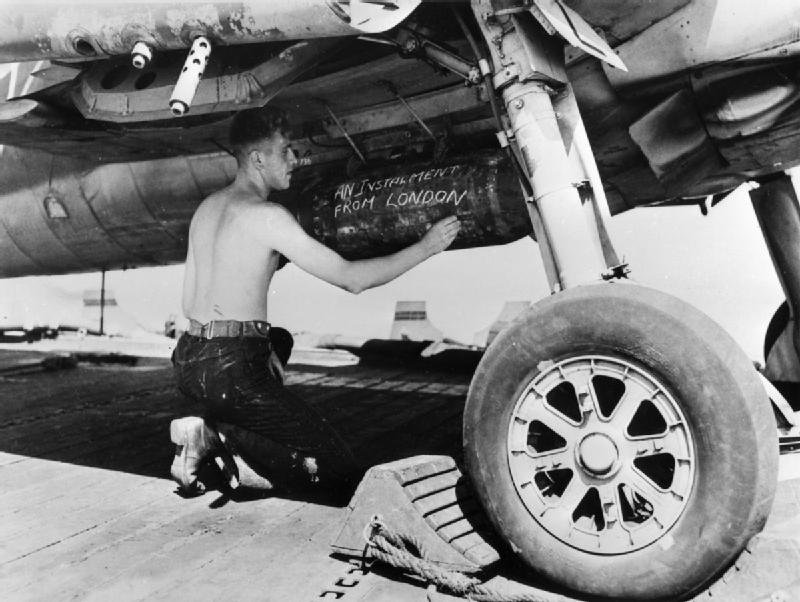
4.
The Royal Navy during the Second World War A large group of men helping to clear a crashed Grumman Hellcat of 804 Squadron, Fleet Air Arm from the flight deck of the Escort Carrier HMS AMEER whilst others look on. This photograph was taken during the eleven days of action in the course of the successful landings on the islands of Ramree and Cheduba.
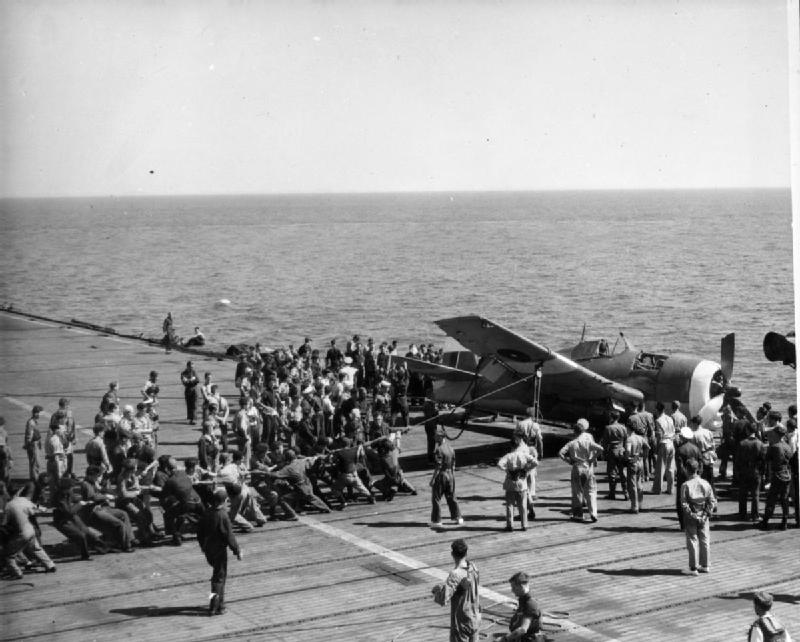
3.
A U.S. Navy pilot from Fighting Squadron 25 (VF-25) aboard the light aircraft carrier USS Cowpens (CVL-25) evacuates his burning Grumman F6F-3 Hellcat (BuNo 66101) after landing unaware that it was on fire, during the Gilberts Operation, 24 November 1943. Firefighters are rushing to the plane, and put out the flames in a minute and a half, with no casualties. The fire started as the Hellcat approached Cowpens for an emergency landing. The pilot was Lieutenant (Junior Grade) Alfred W. Magee Jr., USNR.
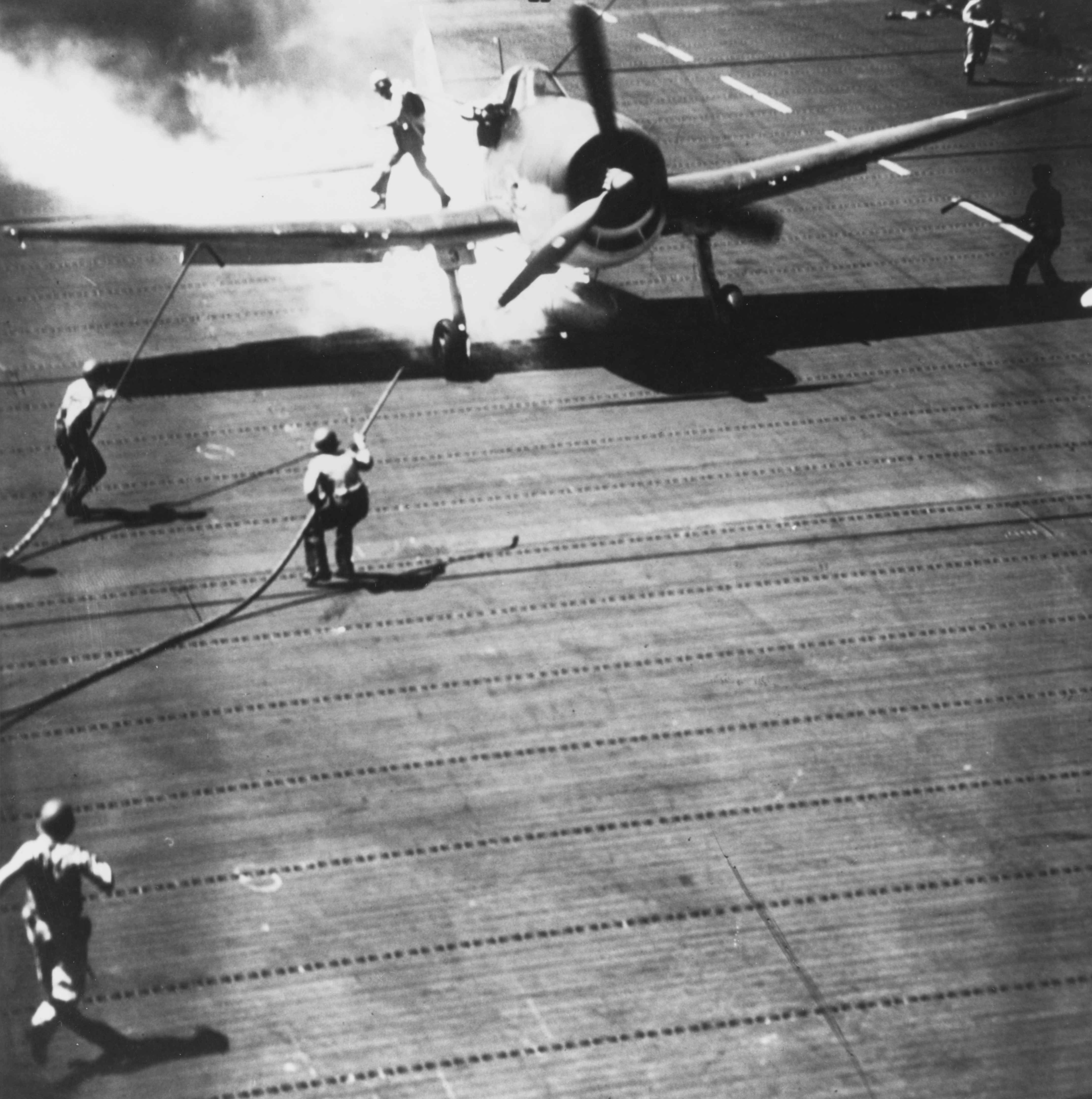
2.
The U.S. Navy Landing Signal Officer aboard the aircraft carrier USS Yorktown, Lt. Richard (Dick) C. Tripp, with a Grumman F6F-3 Hellcat landing. Note that he is wearing tennis shoes and floral pattern shorts! Tripp directed more than 10,000 carrier deck landings from 1943 to 1945.
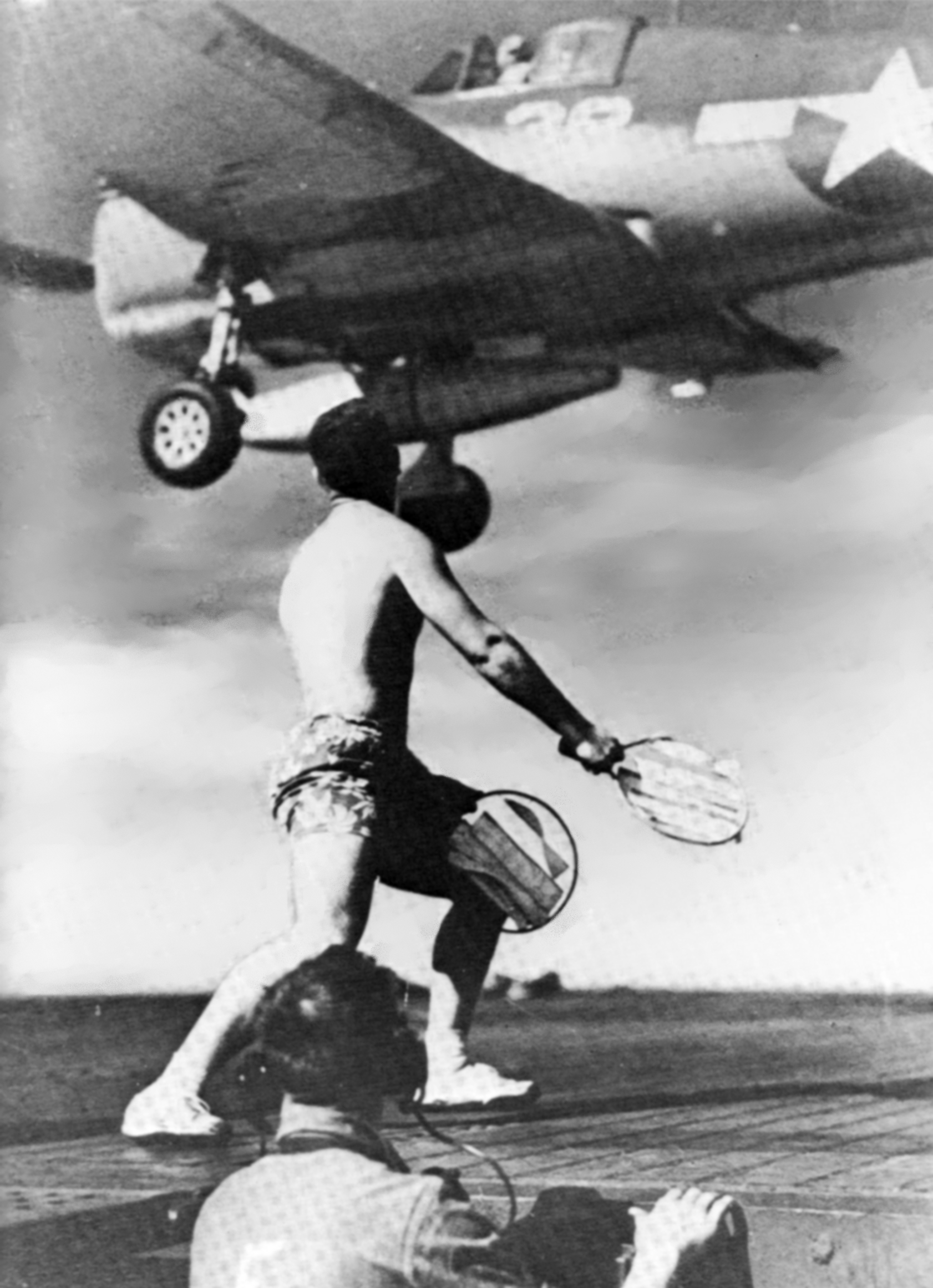
1.
Crash landing of F6F-3, Number 30 of Fighting Squadron Two (VF-2), USS Enterprise, into the carrier’s port side 20mm gun gallery, 10 November 1943. Lieutenant Walter L. Chewning, Jr., USNR, the Catapult Officer, is climbing up the plane’s side to assist the pilot from the burning aircraft. The pilot, Ensign Byron M. Johnson, escaped without significant injury. Enterprise was then en route to support the Gilberts Operation. Note the plane’s ruptured belly fuel tank.

We’ve also included a startup of a Hellcat below. It’s now at the Flying Heritage Collection and at the time of filming, was just newly restored.




















